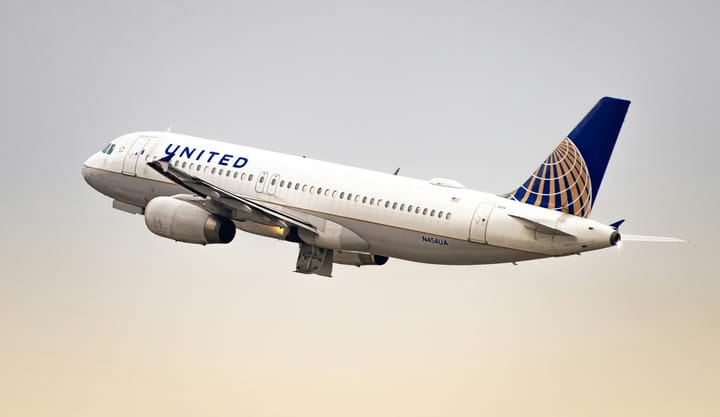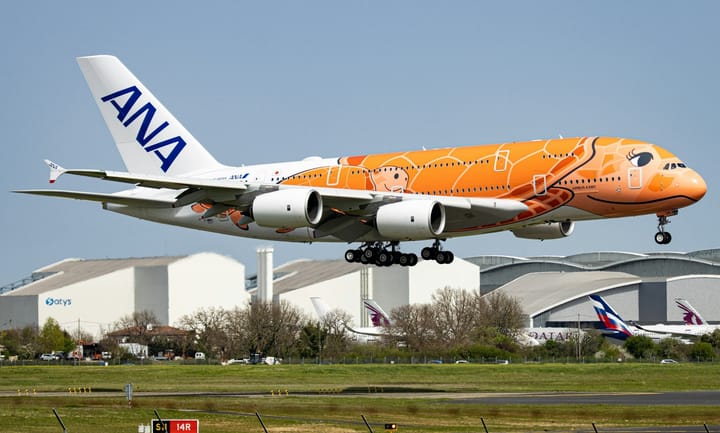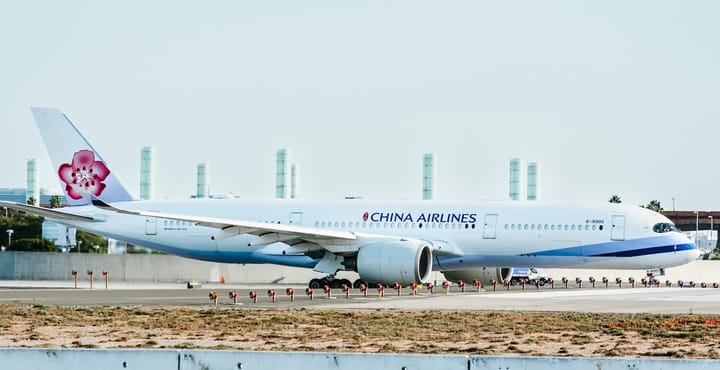Sun Country Airlines blends scheduled, charter, and cargo services to maximize fleet use and route efficiency—offering a distinct model focused on high-load operations and strong revenue performance across leisure-driven markets.
1. Total Passengers Carried
Sun Country’s passenger traffic has surged post-pandemic, reflecting its leisure focus. The airline carried roughly 4.48 million passengers in 2024, up 8.29% from 4.13 million in 2023. This marks an all-time high, far exceeding the roughly 3.52 million flown in 2019. Passenger growth has been driven by strong vacation and VFR (visiting friends and relatives) demand on sun-oriented routes. The recovery trajectory has been steep: after COVID-19 collapsed demand, full-year passengers rebounded strongly in 2021 and 2022.
For scheduled service alone, full-year traffic grew from 4.13M in 2023 to 4.48M in 2024. Even the holiday quarter was robust: Q4 2024 saw about 1.05 million passengers, roughly flat with Q4 2023, indicating sustained demand. Charter operations (e.g. NCAA teams, casino groups) also add millions of passengers annually and help maintain momentum. These combined markets enabled Sun Country to reach record passenger levels as travel normalized.
Sun Country’s network additions and seasonal shifts have enabled these gains. The airline has added flights to leisure destinations (Florida, Mexico, the Caribbean) and leverages charters to keep aircraft busy off-peak. For example, its charter business serves casinos, sports teams, and military transport, supplementing the scheduled revenue. By aligning capacity with peak travel times, Sun Country maximizes passengers carried when demand is highest.
The company’s scale is notable given its size. Sun Country regularly ranks near the top of origin-destination markets at its Minneapolis–St. Paul hub (second only to Delta) and serves over 80 destinations. Its frequent high load factors (80–85%+) indicate effective matching of supply to demand. This success is recognized in industry rankings: in 2024 the airline won CAPA’s “Low Cost Carrier of the Year” award, reflecting the strength of its passenger service (and, by implication, its ability to fill seats).
2. Total Flights Operated
Sun Country’s flight operations have expanded alongside passenger growth. In 2024 it operated about 53,000 total departures (scheduled, charter and cargo), up ~6% from 50,040 in 2023. Scheduled passenger flights alone totaled 29,028 in 2024 (11% more than 2023). Cargo operations (Amazon Air contract) saw 13,094 freighter departures, and charter flights numbered about 10,359 – both roughly flat year-over-year. In practical terms, this means more aircraft were flying each day: Sun Country clocked some 148,518 total block hours in 2024 (6.2% more than 2023), reflecting higher utilization of its expanded schedule.
Scheduled flights form roughly half of Sun Country’s flying; the rest is charter and cargo. For example, the passenger division flew 29,028 trips, while the cargo fleet flew about 13,094 segments (up slightly from 13,009 in 2023). The charter division flew about 10,359 trips in 2024, similar to 2023 levels. These figures underscore Sun Country’s hybrid model: it relies on scheduled service for most flying, but its charter and ACMI contracts keep aircraft busy when passenger demand is low. The combination results in a sizable total flight count for a relatively small mainline fleet.
Sun Country’s scheduling is highly seasonal. The airline’s network is much larger in peak months (e.g. summer) than in winter. Corporate filings note that only about 3% of Sun Country’s routes run daily year-round. Outside those core routes, the airline flexibly adds and removes flights. This ‘power pattern’ scheduling (combining charter legs onto the same aircraft used for scheduled flights) boosts annual departures without increasing fleet size. In practice, planes might fly a high-demand weekend leisure route and then a charter in the week, maximizing departures per aircraft.
Sun Country also increased its fleet to support more flights. By the end of 2024 it had 45 passenger Boeing 737s in service (up from 42 in 2023). It even took delivery of a Boeing 737-900ER in late 2024 to add capacity. With more jets and aircraft hours, total departures rose. This growth strategy – adding aircraft and routes – naturally leads to more flights. It is a deliberate strategy to capture leisure demand; each incremental plane and flight adds hundreds of thousands of available seat miles.
The large number of flights has earned Sun Country recognition for operational scale. For context, in North America Sun Country carried as many passengers in 2024 as entire fleets like Flair Airlines (4.48M), making it one of the larger carriers by traffic. (This is due to its mix of scheduled and charter flying.) Industry outlets like Air Transport World have noted Sun Country’s rapid expansion. Operationally, the airline has shown it can ramp up departures efficiently: its average daily flight count increased significantly each year from 2020–24, driven by both restored routes and new ones.
3. Available Seat Miles (ASM)
Capacity growth at Sun Country is evident in Available Seat Miles (ASMs). In 2024 the airline offered about 6.699 billion ASMs, an 11.0% increase from 6.037 billion in 2023. This growth reflects both more flights and more seats per flight (from larger aircraft or higher density). With more planes and added frequencies on popular routes, each day sees tens of thousands of extra seat-miles. Notably, 2024’s capacity vastly exceeds pre-COVID levels; the airline effectively added as much capacity as it had pre-pandemic, underscoring the pace of expansion.
The expansion was concentrated in leisure markets. Q4 2024 ASMs grew only 3.5% YOY, whereas the full year saw 11% growth – highlighting Sun Country’s seasonal strategy. Only a small fraction of flights run in the off-peak; the company notes that only ~3% of its routes are year-round daily. Thus summer and holiday schedules add far more capacity (many flights on each route) than winter. This approach keeps overall ASMs rising steadily while matching supply to demand peaks.
Sun Country’s fleet changes also added capacity. It received a Boeing 737-900ER in late 2024, and grew its passenger fleet to 45 jets by year-end (from 42 at end-2023). At the same time, six older aircraft were leased to others (though still on its books). The net increase – three more passenger 737s actively flying – translates into significantly higher ASMs. On average in 2024 Sun Country deployed over 43 passenger aircraft per day, up from about 38 a year earlier, directly generating the 11% ASM rise.
Crucially, the airline scaled capacity while keeping costs in check. Full-year 2024 adjusted CASM (cost per ASM, ex-fuel) rose only 1.3%. In other words, each seat-mile was delivered very nearly as cheaply as before. On a system-wide basis (including cargo flying), total ASMs were about 8.072 billion in 2024 (up 8.8% from 7.416B in 2023). This shows that Sun Country expanded its entire network’s capacity across all operations. By improving aircraft utilization and leveraging its hybrid model, it turned more ASMs into revenue without proportionally higher costs.
Industry and customer recognition suggest the added capacity is being absorbed. For example, CAPA awarded Sun Country North America’s Low Cost Carrier of the Year for 2024. While not a capacity metric, this accolade reflects efficient operations – implying that new seats are attracting passengers. In practice, even as ASMs rose, the airline maintained strong load factors. This means that the extra capacity is not going to waste: most of the added seat-miles are being filled.
4. Revenue Passenger Miles (RPM)
Sun Country’s traffic as measured in RPMs has risen along with capacity. In 2024 the airline accumulated about 5.642 billion RPMs, up 8.2% from 5.213 billion in 2023. That increase nearly matches ASMs, indicating that higher capacity has largely been translated into passenger traffic. In effect, more flights and seats have flown full planes over longer distances. The result is that total passenger-miles now exceed pre-COVID figures, meaning the airline not only recovered but grew its market.
During Q4 2024, RPMs were roughly flat (1.309 billion vs 1.317 billion in Q4 2023), even as ASMs grew 3.5%. This illustrates some yield pressure: average base fares had fallen (2024’s full-year base fare was $91.25 vs $109.61 in 2023), so the airline filled more seats at lower price. Ancillary revenue gains helped cushion the effect, but the net result is that passenger-miles lagged capacity slightly in Q4. Overall, RPMs stayed in line with Sun Country’s summer season strength and offset winter dips.
Ancillary revenue plays a role in total passenger contribution. Sun Country saw ancillary revenue per passenger rise about 3% in 2024 (to $68.68), which helped offset fare cuts. The total fare paid per passenger (fares plus ancillaries) was $159.93 in 2024, slightly below $176.30 in 2023. In other words, each passenger is contributing nearly the same total revenue, so the extra RPMs are largely profitable. This mix of higher ancillary yields and nearly-flat base fares has enabled Sun Country to generate more RPMs without proportionally higher ticket revenue.
It is worth noting that RPMs only capture passenger traffic. Sun Country’s Amazon Air cargo flights add separate revenue-ton-miles not reflected here. By alternating aircraft between passenger and cargo work, the airline ensures its assets fly more, although those extra miles aren’t counted in RPM. The benefit is clear: the Amazon contract has provided “consistent, positive cash flows” even when passenger demand slumped. This means that RPM swings have less impact on financial health, since the cargo business helps cover overhead when passenger RPMs dip. This means that RPM swings have less impact on financial health, since the cargo business helps cover overhead when passenger RPMs dip.
5. Passenger Load Factor (%) Analysis
Sun Country consistently achieves high load factors (percentage of seats occupied). In 2023 its scheduled service load factor was about 86.3%, one of the highest in the U.S. airline industry. This is driven by its business model (low fares and point-to-point leisure routes) which fills a large share of seats.
Operational tactics support the high loads. Sun Country uses what it calls “Power Patterns” in scheduling – combining charter legs with scheduled flights on the same aircraft. For instance, a plane might fly a weekend leisure route and then a midweek charter for extra revenue. This strategy replaces thin routes with guaranteed-charter flights, keeping the plane fuller. In fact, the company noted that very few of its routes operate year-round daily, meaning it flexes flight frequency to demand. These scheduling tactics help ensure that most flying occurs on high-demand routes at high loads.
Load factors vary seasonally. Q4 2024 load was ~81.6%, down from 84.7% in Q4 2023, reflecting the normal winter lull in leisure travel. By contrast, summer quarters often see loads in the upper 80s. Sun Country deliberately curtails capacity outside peak seasons, which keeps average loads up. Its multiple revenue streams help: charter operations often guarantee full planes, and cargo flying uses planes that might otherwise fly nearly empty. These factors help stabilize the overall load factor in off-peak months.
Investors should note, however, that load factors are subject to market conditions. An unexpected drop in demand (or aggressive competitor pricing) could lower occupancy. If demand softens, Sun Country may match price cutting by the industry, which could fill seats but at the expense of unit revenue. For now, though, the company’s high load factor (compared to the industry average in mid-70s) remains a cornerstone of its appeal. It suggests that, historically, Sun Country has operated near capacity, helping to support profitability on a per-flight basis.
6. Financial Performance Analysis
6.1. Operating Revenue ($) Performance
Sun Country’s operating revenue has climbed in recent years. In 2023 it reported a record $1.05 billion in total operating revenue. In 2024, revenue grew further to about $1.076 billion (a ~2.5% increase), reflecting continued traffic growth but also competitive pricing. Scheduled passenger service remains the core revenue driver (strong summer and holiday demand boosting sales), but ancillary fees, vacation packages, and charter contracts also contribute significantly. The full-year results show that even a small leisure carrier can generate substantial revenue by growing its network and leveraging multiple streams.
Seasonality was evident in the quarterly breakdown. Q4 2024 revenue was $260.4 million, up 6.05% year-over-year, and the highest-ever Q4 for Sun Country. Strong holiday bookings (December unit revenue was up mid-single-digits) drove this performance. Charter services and vacation packages also bolstered the quarter’s sales. Overall, the company noted that rising travel demand, especially in late 2024, produced record quarterly revenue despite some softening yields in earlier months.
At the unit level, the airline saw mixed trends. Scheduled service TRASM (total revenue per ASM) fell by 8.7% in 2024 (from 12.27¢ to 10.87¢), reflecting lower average fares. Part of this was offset by growing ancillary revenue per passenger (up 3% in 2024). In practice, Sun Country often offered early-booking discounts that boosted load factors; by late 2024 management reported improving yields (December TRASM was +5% YOY). Thus, operating revenue grew mainly via volume rather than higher fares. The fiscal year’s story is one of solid revenue growth, tempered by the industry’s promotional pricing.
6.2. Net Income ($) Analysis
Sun Country’s bottom-line results have fluctuated with the business cycle. After pandemic losses, the airline became solidly profitable: it earned $72.96 million in net income in 2023. In 2024 net income was $52.87 million, a drop of roughly 27.5% versus the year before. This decline came despite higher revenue, as costs rose faster. Essentially, growing the airline’s size came with higher expenses – especially in maintenance and airport fees – which squeezed the margin on each extra dollar of revenue.
Operating margins narrowed accordingly. Full-year 2024 operating income was $106.0M on $1,075.7M revenue, compared to $127.5M on $1,049.6M in 2023. That implies a GAAP operating margin of roughly 9.9% in 2024, down from 12.1% in 2023. After taxes, net profit margin similarly fell. Management explained that fuel costs actually improved (fuel burn was up 11% but price per gallon was down 10%), so the profit drop was driven by other expenses. In particular, maintenance expense jumped 13.5% in 2024 (more heavy checks) and airport costs rose ~18% as pandemic waivers lapsed.
On the plus side, the airline kept many costs under control. Adjusted CASM (cost per ASM ex-fuel) rose only about 1.3%, indicating disciplined cost management. Labor, IT, marketing and similar costs grew only modestly. The balance sheet remained strong: by year-end 2024 Sun Country had $83.2 million in cash (up from $46.3M), and net debt was reduced through that new financing. In other words, the company generated plenty of cash to support operations, giving it room to grow or buffer downturns. These factors helped preserve profitability despite the margin squeeze.
Looking forward, external factors will sway net income. Interest rates and fuel price swings are in play. For example, Sun Country’s average fuel cost per gallon fell to $2.77 in 2024 from $3.11 in 2023, helping cut expenses. The guidance assumes fuel cost will be ~15% higher in Q1 2025 vs Q1 2024 – a potential headwind if it materializes. Labor is also a focus: late 2024 saw tentative agreements with flight attendants and dispatchers for multi-year contracts, which should cap labor cost growth going forward. Meanwhile, cargo rate escalations under the Amazon contract will boost revenues. All told, net income is likely to depend on the balance of these factors.




Comments ()